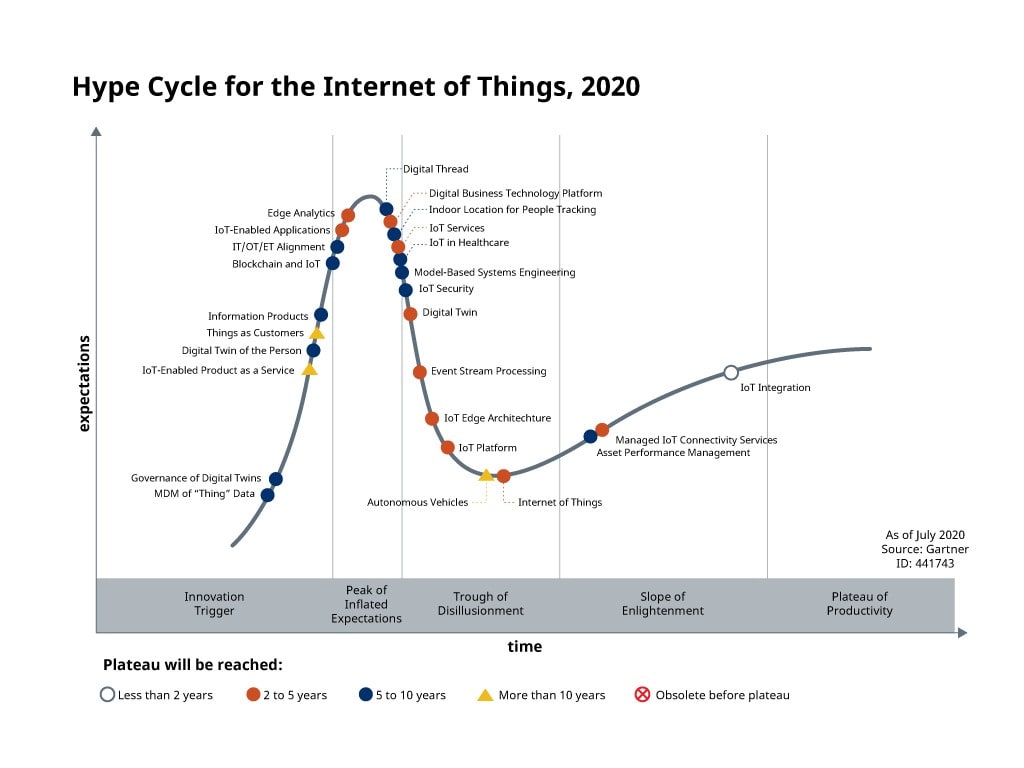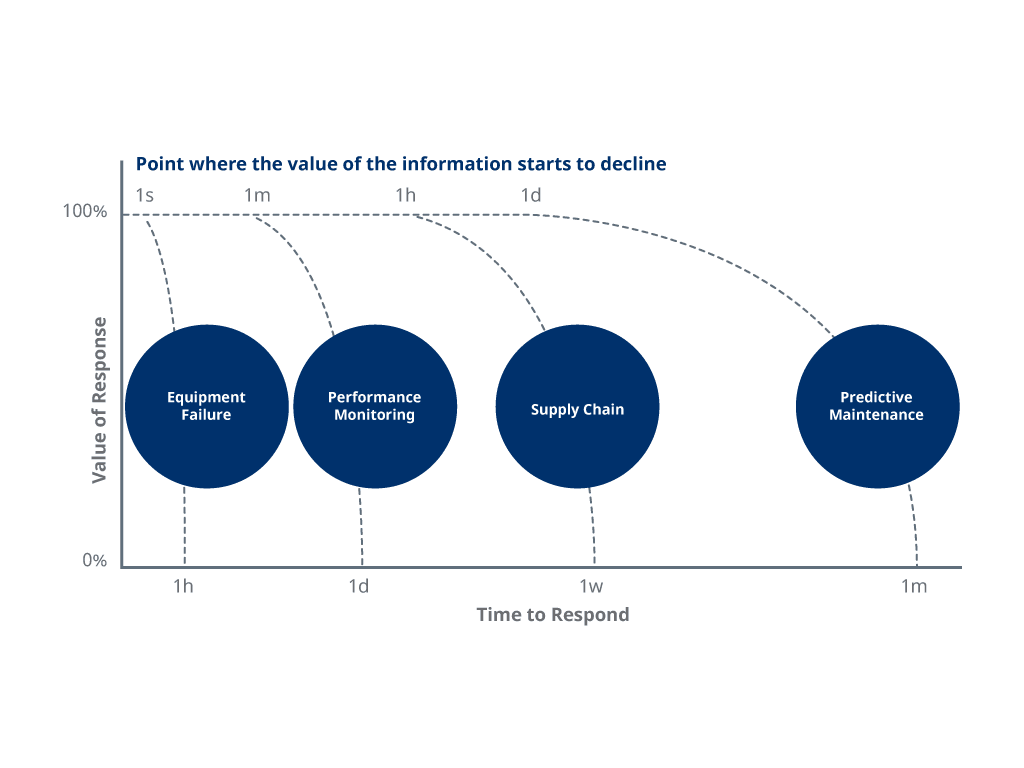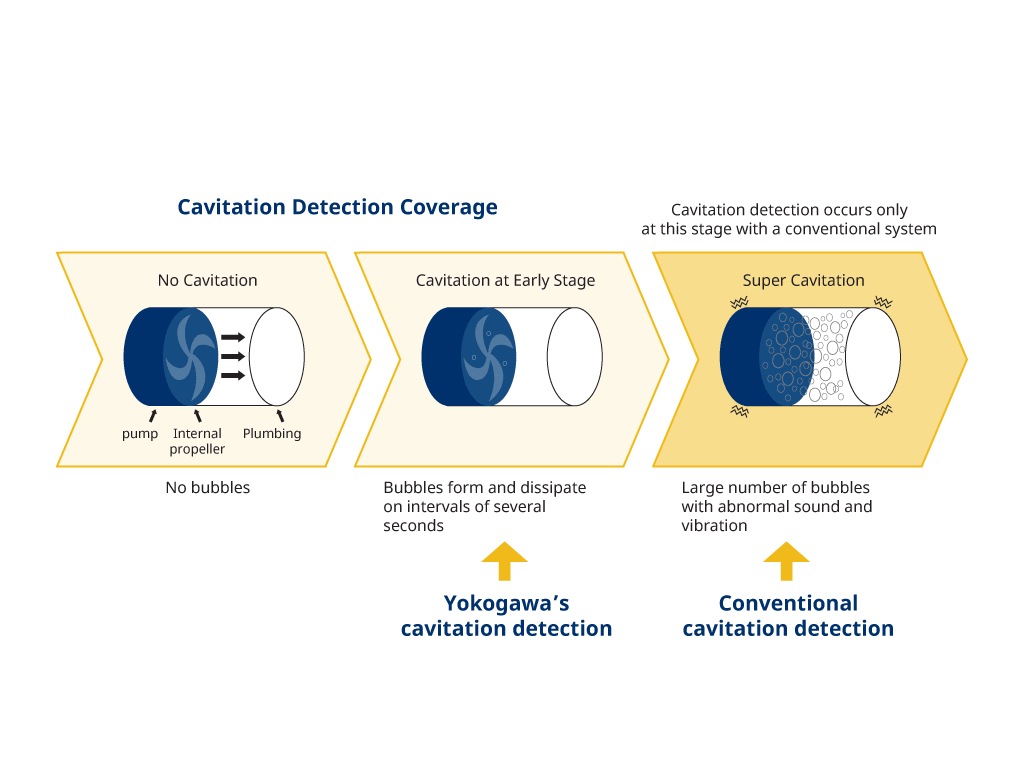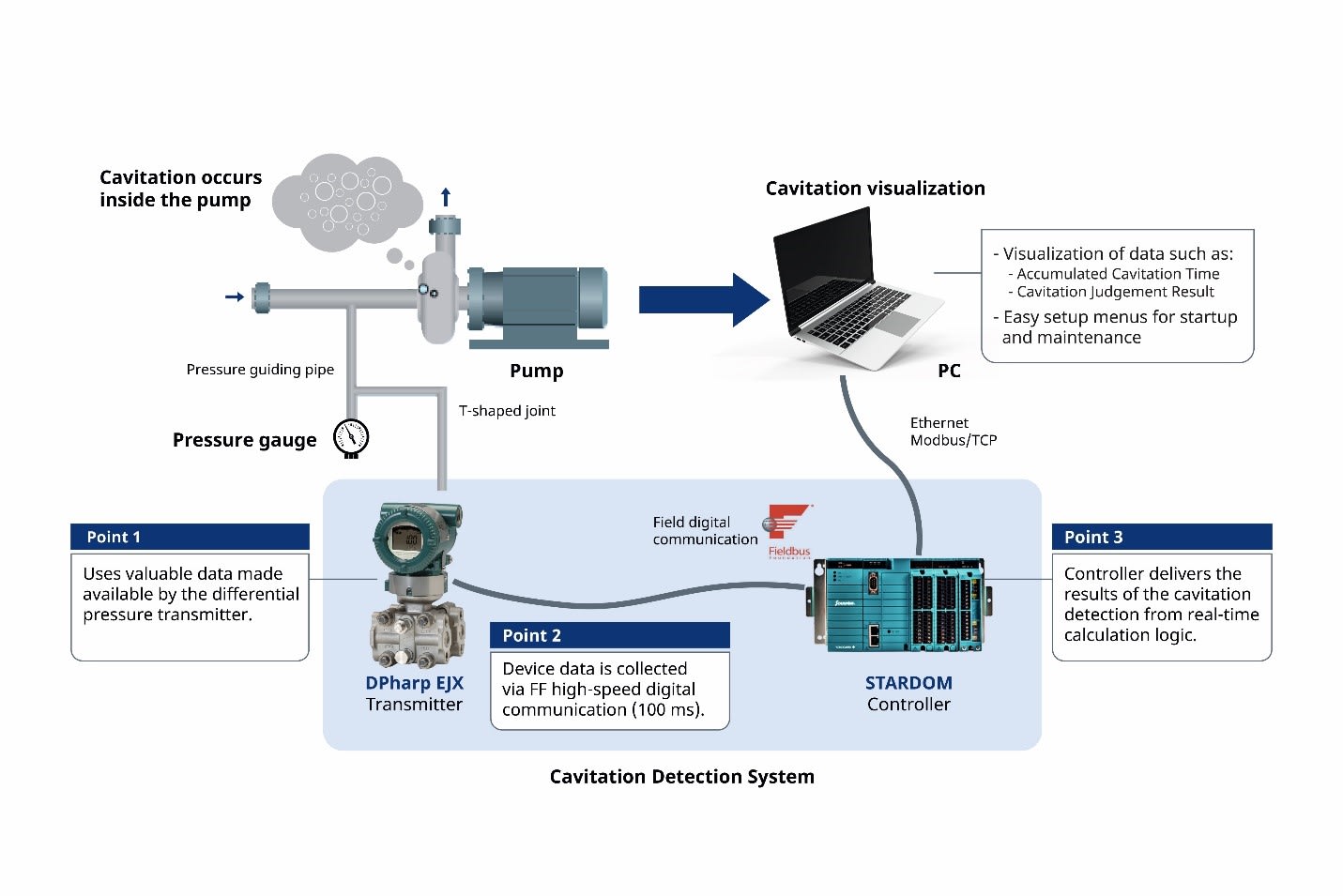by Kevin Zamzow, Manager, Emerging Solutions, Yokogawa Corporation of America
Introduction
A refinery generates an average of one terabyte of raw data per day. Unfortunately, less than five percent of this data is acted upon due to information decay or lack of a reliable closed-loop infrastructure. If the intelligence to act on the data can be moved closer to the data source, more data can be used. For example, according to Frost & Sullivan, reducing refinery and petrochemical plant unplanned events involving a critical asset can prevent a downtime loss of over $200,000 per day.
Many plants are in the early stages of a digital transformation journey from industrial automation to industrial autonomy, or IA2IA™. In addition to the typical hype around the concept of industrial autonomy, many of the concepts and technologies that increase plant autonomy are in the “peak of inflated expectations” and “trough of disillusionment” stages in various Gartner Hype Cycles (Figure 1). Edge architecture and edge analytics are two technologies that are expected to reach maturity in the next few years. 
Digital Transformation toward Industrial Autonomy
The way we work is changing. Accelerated by the impact of COVID-19, industrial autonomy is moving to the forefront of efforts to improve worker productivity, quality, and safety. In fact, 64% of end users are now planning to establish autonomous operations over the next decade. Autonomy is the ability of a system to sense the state of its environment, analyze the data it senses to find operational problems or changing resource demands and adapt the environment dynamically to resolve issues and address changing business demands at optimal cost. Autonomous operations can be defined as assets and operations that have human-like learning and adaptive capabilities that allow them to respond without operator interaction to situations within a secure bounded domain. A key criterion is the fact that such actions were not pre-programmed or anticipated in the design yet are responsible for all safety-critical functions.
The Cloud and Industrial Internet of Things (IIoT) are prevalent in many petrochemical companies’ plans to digitally transform. Other IIoT and IT/OT convergence enablers such as open architectures and advanced analytics including artificial intelligence (AI) and machine learning (ML), utilize cloud-based or on-premise “data lakes” that store both structured and unstructured IT and OT data. Data visualization and analytics, including ML, can be run in real-time to improve plant operations.
As IT, OT and IIoT converge, engineers are sorting through system architecture considerations. How do they determine whether functionality, such as analytics and control algorithms are performed in the Cloud or at the Edge? How do they combine IIoT technologies with existing OT systems in the plant? What are the cyber security implications?
Edge Architecture
In a traditional IT network, the Edge consists of devices such as gateways and routers, which perform conversions in data formats or protocols for communication with external devices or networks. In a converged, IT/OT/IIoT network, the Edge includes devices that interface a network to the physical world. Edge devices include intelligent sensors, final control elements and controllers as well as a new generation of gateways that interface those devices to the Cloud.
In the continuum from the Edge to the Cloud, the location of certain functionality depends on the rate of decay of data relevance. The higher that rate is, the more quickly the value of a response to a data transition declines. A mission-critical application with a data decay on the order of seconds requires control and analytics physically close to the data source. In this case, network latency could make a Cloud solution ineffective (Figure 2). 
For non-critical applications, the IIoT concept of the Edge is challenging the architecture of an automation network. Edge computing is performed at or near the data source instead of in the Cloud or data center. The Edge controller is often the secure end point for plant floor systems. It places emphasis on bringing computation and data storage closer to the sensor while a subset of the data is sent to the Cloud for centralized analysis. Like digital field buses, IIoT can be used for remote diagnostics, asset management, predictive maintenance, and safety monitoring.
Edge Nodes
Edge nodes can range from specialized edge computers that run open real-time operating systems (RTOS) to those that use general-purpose operating systems such as Linux. Some have simply added functionality such as machine learning to process controllers. There are efforts to harmonize edge computing with an interoperable, open source model that is similar to Android for mobile applications. The Linux Foundation’s LF Edge initiative (https://www.lfedge.org/) includes projects such as EVE (Edge Virtualization Engine) to create an open and agnostic standard edge architecture that accommodates complex and diverse on- and off-premise hardware, networking, and applications. LF Edge is analogous to the Open Process Automation (OPA) vision of open, standards-based, secure, and interoperable control systems.
Some edge nodes support virtual machines (WM) or software containers, for example, Docker on Linux machines. These allow edge nodes to host applications including communications such as message queuing telemetry transport (MQTT) clients/brokers, ML engines to provide intelligence at the Edge, and security appliances for cyber security protection. Edge nodes with AI/ML can reduce local area and wide area network congestion and costs, particularly for high data applications such as image analysis for leak detection or flare stack monitoring. The various sensor data sources require cleansing and contextualization, for example, into equipment types such as a pump or heat exchanger. ML algorithms can then learn equipment health or energy efficiency properties and predict related operational impacts.
Sensor Nodes
Sensor nodes can use legacy, hard-wired analog or digital I/O, hard-wired fieldbus, or wireless protocols such as ISA100, WirelessHART, Wi-Fi, cellular, or LoRaWAN. Each wireless protocol has strengths and weaknesses in terms of coverage area, bandwidth, and battery life. The private 5G New Radio Unlicensed (NR-U) standard promises to transform communications within refineries and petrochemical plants. 5G NR-U will provide ultra-reliable, low latency communications (URLLC), time sensitive networking (TSN), positioning to within 20 cm, and support of low power IIoT devices through NB-IoT and LTE-M—which are forward compatible with 5G NR-U.
An increase in sensor processing capabilities and faster wired communications using a protocol agnostic Ethernet advanced physical layer (Ethernet-APL) are enabling migration of the Edge to the sensor level. A sensor with a low power-consuming microcontroller unit (MCU) or system-on-a-chip (SoC) possesses the processing power to support embedded intelligence and security features such as authentication, encryption, certificates, and a Trusted Platform Modem (TPM) for generating and storing cryptographic keys.
Last year, the IEEE approved the 802.3cg-2019 (10BASE-TIL) standard for single-pair Ethernet (SPE). Now, standards organizations including ODVA (EtherNet/IP), PROFIBUS and PROFINET International (PROFINET), OPC Foundation (OPC UA), and FieldComm Group (HART-IP) are working to update their respective Ethernet communications standards to support Ethernet-APL. Providing up to 10 Mbps communications and intrinsically safe power over SPE, Ethernet-APL is a game changer for sensor communications and open connectivity frameworks. Ethernet-APL power switches can be used in place of terminal blocks in marshalling cabinets.
Securing the Edge
Due to their expanded connectivity and increased analytics capabilities, deployment of Edge devices in process plants increases the cyberattack surface. For cybersecurity management, Edge computers should have both hardware-based measures such as a TPM and software appliances running in containers. The latter can protect devices from cyberattacks by limiting instructions and activity access and by monitoring industrial protocol messages.
If sensor nodes or Edge computers are using wireless communications, encryption of the data payload in addition to the wireless communications packet is recommended. This is particularly important if public, wide area networks such as cellular are used to transmit data to/from the Cloud. Monitoring the radio frequency environment using a spectrum analyzer node can expose wireless jamming, denial-of-service attacks and non-intentional interference from other plant networks or neighboring facilities.
Use Cases
Pump Cavitation Detection with Edge Intelligence
Cavitation is a physical phenomenon in which pressure differentials within a flowing liquid can rapidly cause formation of vapor-filled cavities, or “bubbles.” The energy released when the bubbles collapse has the potential to create significant damage to the equipment and result in a system failure. Process industries use large, highly complex pumps. Failure of such process-critical pumps could result in downtime costs that exceed $200,000 per day. Pump cavitation also presents a major safety risk.
Today, process plant operators closely monitor these pumps and are implementing predictive maintenance solutions. Existing cavitation detection systems monitor the pump and piping for abnormal sounds and vibration. However, by the time they report a problem, cavitation could be well underway (Figure 3).

A new methodology is able to accurately detect cavitation much earlier by using a high-precision, differential pressure transmitter to measure the weak pressure fluctuation as a bubble collapses. Using an embedded ML algorithm, an Edge controller operating on a 100-millisecond cycle can quickly react by reducing the pump speed (Figure 4).

Balance of Plant Rotating Equipment Vibration Monitoring and Intelligence
A plant maintenance staff typically monitors non-critical rotating equipment such as small to medium size pumps and compressors through periodic patrol rounds with hand-held vibration detectors. As plant management strives to utilize staff more efficiently and run plants autonomously, IIoT vibration sensing presents a cost-effective, 24x7 solution. In addition to continuously monitoring the rotating assets, ML algorithms that have learned “normal” operations can perform health assessments and detect anomalies much more quickly. They predict a maintenance timeframe, which can be scheduled with the necessary parts and resources. This precludes additional damage or potentially running assets to failure and requiring unscheduled maintenance.
The low rate of decay of data relevance relative to the prior use case allows the ML algorithms to run in the Cloud. Alternatively, they can run locally on an Edge platform with communications to on-premise systems and data lakes.
Conclusion
As refinery and petrochemical plants digitally transform and pursue industrial autonomy, it is important to manage stakeholder expectations vis-à-vis current technology and deploy standard capabilities to reduce the impact of the hype cycle. Plants can achieve productive implementations sooner through standardization and by starting with the applications that provide the greatest impact. Outcomes must be visible throughout the organization and aligned with business drivers. Agile approaches with minimum viable solutions and short project cycles are advised as plants adjust to the rapid evolution of digital transformation solutions. A digital transformation maturity assessment will identify the current state and enable development of a roadmap to industrial autonomy.
Figures all courtesy of Yokogawa.

Kevin Zamzow leads Yokogawa Corporation of America’s Emerging Solutions team for Industrial Automation and Life Innovations. He works closely with the Yokogawa team, which delivers IIoT solutions for on-premise and Cloud plant asset management, including Sushi™ vibration sensors, IIoT infrastructure, and AI anomaly detection.
Kevin has over 20 years of global experience providing industrial wireless communication, utility, and industrial automation solutions and services. He holds a B.S. in Chemical Engineering and MBA, both from the University of Wisconsin-Madison.
Related Products & Solutions
-
Digital Transformation
- Yokogawa's wide process manufacturing knowledge/expertise
- Digital transformation solutions for a better future for our customers
Have Questions?
Contact a Yokogawa Expert to learn how we can help you solve your challenges.